It’s SO WORTH Knowing How to Caramelize Onions!
The research cooks at Food 52 (www.food52.com) adamantly assert there is NO WAY you can caramelize onions in under an hour. I have to agree (ask me how I know).
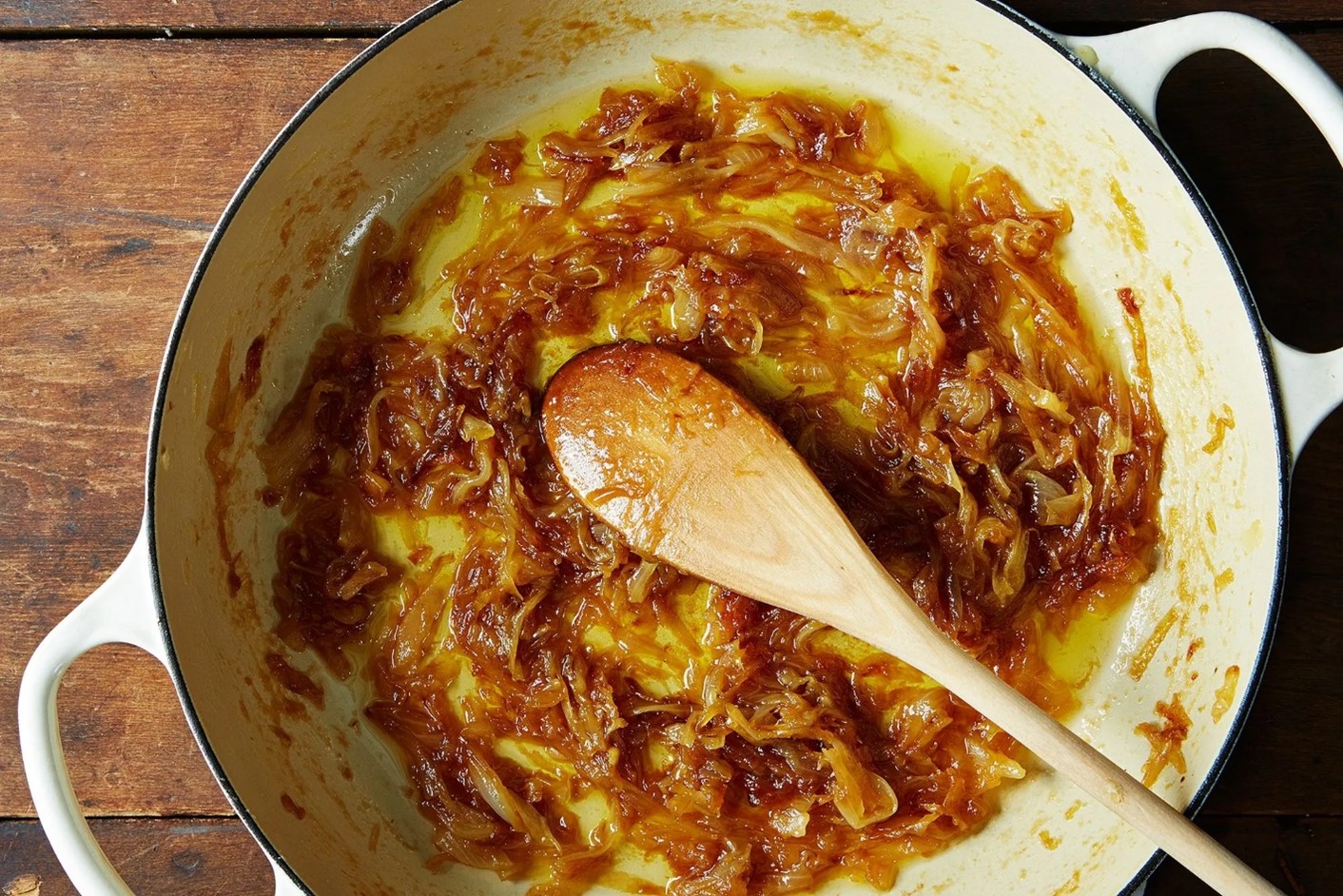
Food 52 chefs agree, “It doesn’t seem to matter how many articles, books, or cooking shows try to set the record straight. Even the experts among us cling to the hope that it’s possible to caramelize onions in 20 or 30 minutes, when in reality it takes about an hour to do it properly.”
Caramelized onions are “an onion transformed,” and they’re only achieved with time, attention, and patience. And so, they’ve shared their information on how to caramelize onions the “right” way. Here’s their method:
First, cut off the tops of 8 to 10 onions, then cut them in half through their roots, then lengthwise into slices about a quarter-inch thick.
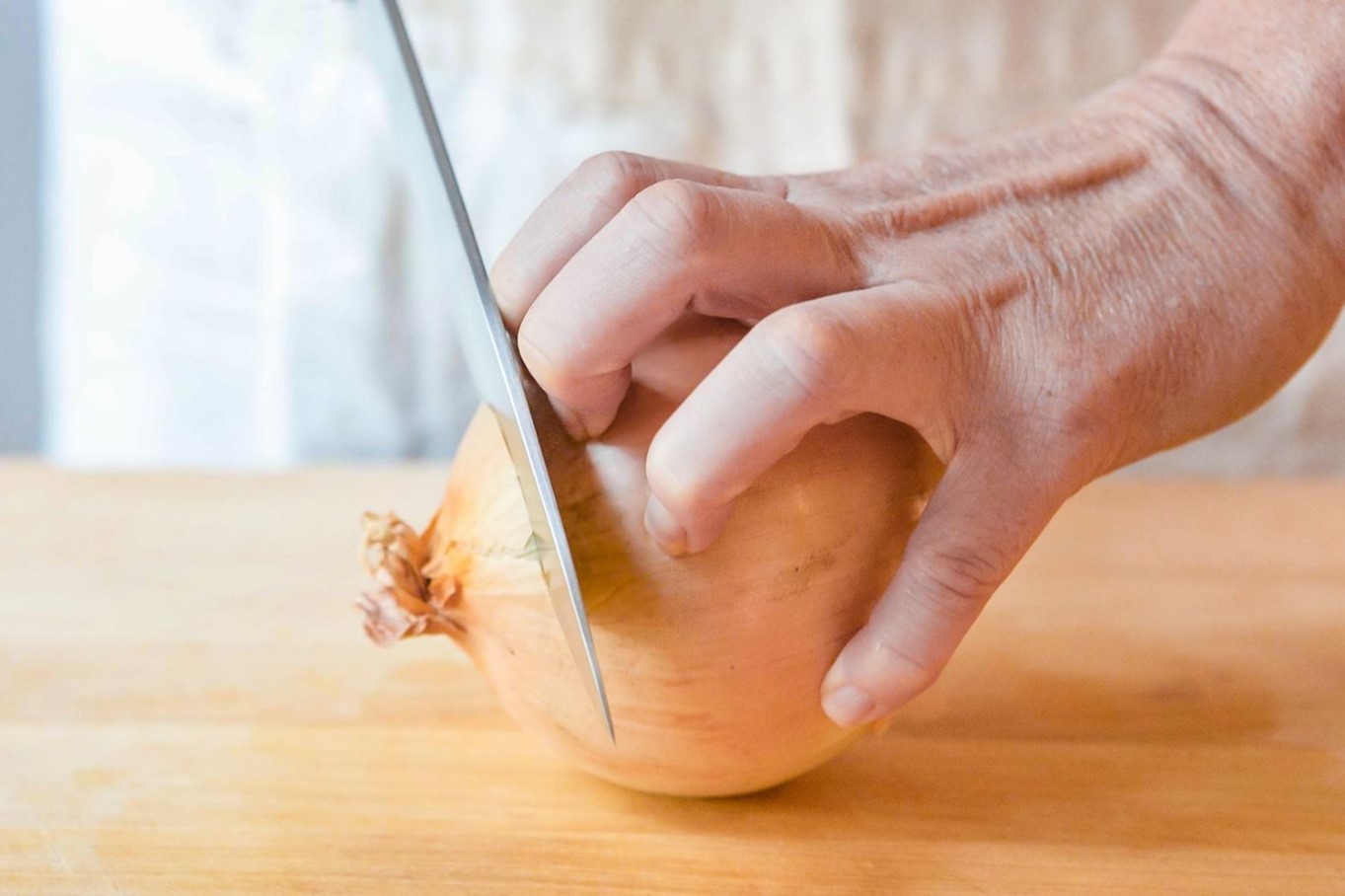
Next, warm 3 tablespoons each of butter and olive oil in a big pot. When the butter is melted, add the mountain of onions, a small pinch of sugar, a big pinch of salt, and stir well.
Cook the onions over medium-low heat, stirring occasionally. Add occasional sprinkles of water if the onions begin to stick, she continues. If they start to sizzle, lower the heat and cover the pot, then uncover it again when the cooking has slowed.
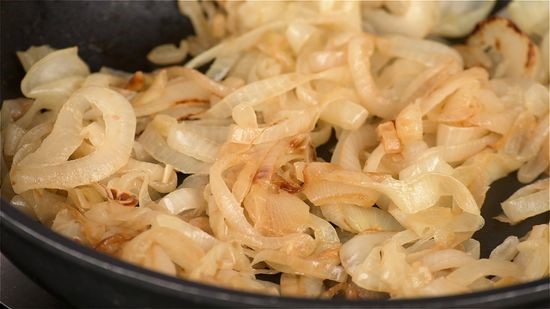
To minimize peeling, look for the biggest yellow onions you can find. The ideal is equal parts olive oil and butter—oil to keep the butter from burning, butter for its round flavor and the sheen it gives the onions. You don’t have to add the sugar; it doesn’t encourage caramelization. But it does tend to boost sweetness.
And the Food 52 chefs also say they can’t give an exact measurement of water. They say, “Adding a few drops at a time lets you understand the rate at which water evaporates.”
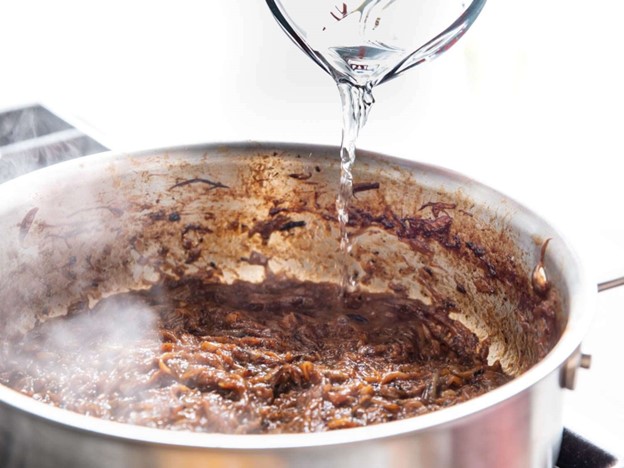
And by the way, if you’ve heard of the baking soda hack that the National Onion Association promotes, proceed with caution. They say a few pinches will speed up the caramelization process to a mind-boggling 13 minutes. Why be cautious with this? While it’s true that adding baking soda increases the speed of the Maillard reaction so they brown more quickly, it also makes the onions more alkaline, thus imparting a chemical-like bitterness to the end result.
So if you can accept the idea that caramelizing onions simply takes time, then the time it takes won’t bother you. And the really accomplished cooks out there will attest to the difference these onions make to any recipe—it’s worth the time it takes.
To get you started with caramelized onions, here’s a recipe from www.food52 that is a fantastic dish for a brunch or late-night supper. Give it a try and let me know how your caramelization went.
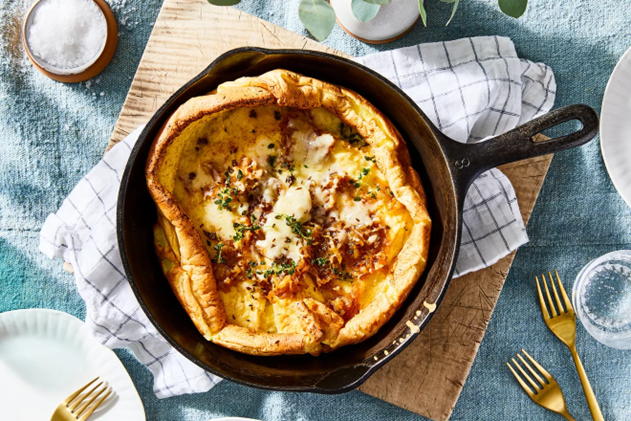
neutral oil (such as canola)
5 sprigs fresh thyme
1/2 teaspoon caraway seeds
3 pounds onions thinly sliced
Kosher salt
1/2 cup hard cider OR white wine
3 large eggs
1/2 cup all-purpose flour
1/2 cup whole milk
1 tablespoon sugar
4 tablespoons unsalted butter
2 ounces sharp, melty cheese (Gruyère or white cheddar) grated
Directions:
Add Recipe to Cook'n

Food 52 chefs agree, “It doesn’t seem to matter how many articles, books, or cooking shows try to set the record straight. Even the experts among us cling to the hope that it’s possible to caramelize onions in 20 or 30 minutes, when in reality it takes about an hour to do it properly.”
Caramelized onions are “an onion transformed,” and they’re only achieved with time, attention, and patience. And so, they’ve shared their information on how to caramelize onions the “right” way. Here’s their method:
First, cut off the tops of 8 to 10 onions, then cut them in half through their roots, then lengthwise into slices about a quarter-inch thick.

Next, warm 3 tablespoons each of butter and olive oil in a big pot. When the butter is melted, add the mountain of onions, a small pinch of sugar, a big pinch of salt, and stir well.
Cook the onions over medium-low heat, stirring occasionally. Add occasional sprinkles of water if the onions begin to stick, she continues. If they start to sizzle, lower the heat and cover the pot, then uncover it again when the cooking has slowed.

To minimize peeling, look for the biggest yellow onions you can find. The ideal is equal parts olive oil and butter—oil to keep the butter from burning, butter for its round flavor and the sheen it gives the onions. You don’t have to add the sugar; it doesn’t encourage caramelization. But it does tend to boost sweetness.
And the Food 52 chefs also say they can’t give an exact measurement of water. They say, “Adding a few drops at a time lets you understand the rate at which water evaporates.”

And by the way, if you’ve heard of the baking soda hack that the National Onion Association promotes, proceed with caution. They say a few pinches will speed up the caramelization process to a mind-boggling 13 minutes. Why be cautious with this? While it’s true that adding baking soda increases the speed of the Maillard reaction so they brown more quickly, it also makes the onions more alkaline, thus imparting a chemical-like bitterness to the end result.
So if you can accept the idea that caramelizing onions simply takes time, then the time it takes won’t bother you. And the really accomplished cooks out there will attest to the difference these onions make to any recipe—it’s worth the time it takes.
To get you started with caramelized onions, here’s a recipe from www.food52 that is a fantastic dish for a brunch or late-night supper. Give it a try and let me know how your caramelization went.

Carmelized Onion Dutch Baby With Melty Gruyere
Ingredients:
neutral oil (such as canola)
5 sprigs fresh thyme
1/2 teaspoon caraway seeds
3 pounds onions thinly sliced
Kosher salt
1/2 cup hard cider OR white wine
3 large eggs
1/2 cup all-purpose flour
1/2 cup whole milk
1 tablespoon sugar
4 tablespoons unsalted butter
2 ounces sharp, melty cheese (Gruyère or white cheddar) grated
Directions:
In a large pan, heat a glug of neutral oil over medium heat until it shimmers. Briefly fry the thyme sprigs and caraway seeds until fragrant, about 30 seconds. Remove the thyme sprigs and save to garnish the Dutch baby after it is baked.
Add the onions to the pan with a big pinch of salt and stir to coat. Cook over medium heat, stirring infrequently and lowering the heat if needed, until they are deeply caramelized, about 30 minutes.
Add the hard cider to deglaze the pan and use a wooden spoon to release any caramelized bits that have stuck to the bottom. Keep cooking until the cider has completely evaporated, about 2 minutes.
Heat the oven to 425°F. Place a large cast-iron skillet in the oven to heat up for 7 to 10 minutes.
Meanwhile, whisk or blend the eggs, flour, milk, sugar, and a pinch of salt until smooth.
With the pan still in the oven, add the butter, close the oven, and let the butter melt, being careful not to let it burn. When the butter is melted and foamy, pour in the batter.
Bake until the pancake is puffed and the center is just cooked through, about 15 minutes.
Remove from the oven and spoon the caramelized onions on top of the pancake. Top with the grated cheese and return to the oven to melt the cheese, 5 to 7 minutes.
Remove from the oven, garnish with the fried thyme leaves, and cut into wedges. This is lovely alongside a big green salad.
Add the onions to the pan with a big pinch of salt and stir to coat. Cook over medium heat, stirring infrequently and lowering the heat if needed, until they are deeply caramelized, about 30 minutes.
Add the hard cider to deglaze the pan and use a wooden spoon to release any caramelized bits that have stuck to the bottom. Keep cooking until the cider has completely evaporated, about 2 minutes.
Heat the oven to 425°F. Place a large cast-iron skillet in the oven to heat up for 7 to 10 minutes.
Meanwhile, whisk or blend the eggs, flour, milk, sugar, and a pinch of salt until smooth.
With the pan still in the oven, add the butter, close the oven, and let the butter melt, being careful not to let it burn. When the butter is melted and foamy, pour in the batter.
Bake until the pancake is puffed and the center is just cooked through, about 15 minutes.
Remove from the oven and spoon the caramelized onions on top of the pancake. Top with the grated cheese and return to the oven to melt the cheese, 5 to 7 minutes.
Remove from the oven, garnish with the fried thyme leaves, and cut into wedges. This is lovely alongside a big green salad.
Recipe formatted with the Cook'n Recipe Software from DVO Enterprises.
 Alice Osborne
Alice Osborne
Weekly Newsletter Contributor since 2006
Email the author! alice@dvo.com
